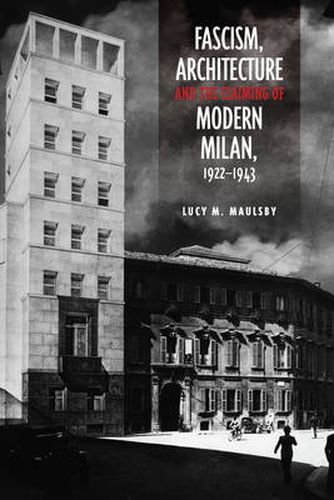Readings Newsletter
Become a Readings Member to make your shopping experience even easier.
Sign in or sign up for free!
You’re not far away from qualifying for FREE standard shipping within Australia
You’ve qualified for FREE standard shipping within Australia
The cart is loading…






Fascism, Architecture, and the Claiming of Modern Milan, 1922-1943 chronicles the dramatic architectural and urban transformation of Milan during the nearly twenty years of fascist rule. The commercial and financial centre of Italy and the birthplace of fascism, Milan played a central role in constructing fascism’s national image and identity as it advanced from a revolutionary movement to an established state power.
Using a wide range of archival sources, Lucy M. Maulsby analyses the public buildings, from the relatively modest party headquarters to the grandiose Palace of Justice and the Palazzo del Popolo d'Italia, through which Mussolini intended to enhance the city’s image and solidify fascism’s presence in Milan. Maulsby establishes the extent to which Milan’s economic structure, social composition, and cultural orientation affected Il Duce’s plans for the city, demonstrating the influences on urban development that were beyond the control of the fascist regime. By placing Milan’s urban change in its historic context, this book expands our understanding of the relationship between fascism and the modern city.
$9.00 standard shipping within Australia
FREE standard shipping within Australia for orders over $100.00
Express & International shipping calculated at checkout
Fascism, Architecture, and the Claiming of Modern Milan, 1922-1943 chronicles the dramatic architectural and urban transformation of Milan during the nearly twenty years of fascist rule. The commercial and financial centre of Italy and the birthplace of fascism, Milan played a central role in constructing fascism’s national image and identity as it advanced from a revolutionary movement to an established state power.
Using a wide range of archival sources, Lucy M. Maulsby analyses the public buildings, from the relatively modest party headquarters to the grandiose Palace of Justice and the Palazzo del Popolo d'Italia, through which Mussolini intended to enhance the city’s image and solidify fascism’s presence in Milan. Maulsby establishes the extent to which Milan’s economic structure, social composition, and cultural orientation affected Il Duce’s plans for the city, demonstrating the influences on urban development that were beyond the control of the fascist regime. By placing Milan’s urban change in its historic context, this book expands our understanding of the relationship between fascism and the modern city.